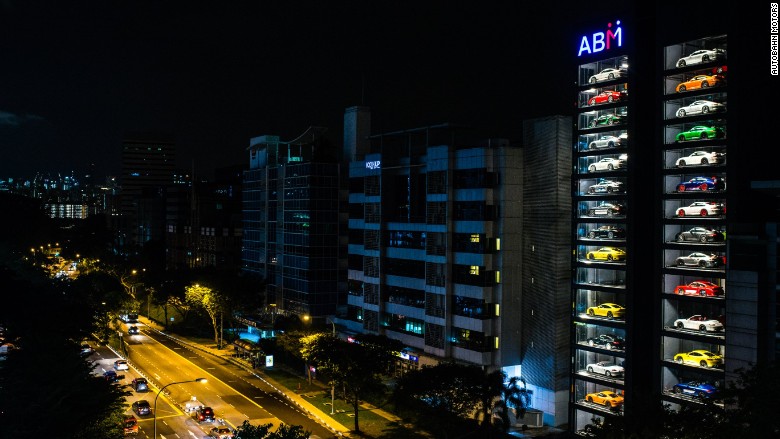The World’s Most Expensive Vending Machine?
If you’re hungry and have a couple of bucks in your pocket, a vending machine may be a good way to get a quick snack. Similarly, if you’re thirsty, there’s a machine for that. Vending is a pretty big business as a result; according to research house IBISWorld, vending machines in the United States brought in more than $7 billion in revenue in 2025 — and that’s a decline from pre-pandemic levels.
There aren’t a lot of great ways for vending machine owners to make up that gap other than raising prices, which, of course, is definitely an option (but bound by the limits of market forces and consumer demand). You could put more expensive items in the machines — you’ll occasionally find ones selling electronics or even cell phones in airports or hotel lobbies.
And if you went to Singapore in 2017, you’d find a vending machine with an even more expensive item for sale:
Ferraris.
And Lamborghinis and Bentleys, too. Here’s a picture, below, but it doesn’t really do it justice, so here’s a one-minute video showing off the cars.
The machine sits in a 15-story building and resembles a Matchbox car collector’s box, and that’s by design. It’s the brainchild of Gary Hong, the general manager of Autobahn Motors, a Singapore-based luxury car dealer. Per CNN Money, “Hong was inspired by a vertical display of Matchbox cars while shopping at the toy store with his son.” It solves a very practical problem that car dealers in the densely-populated city-state have — there’s just not a lot of horizontal space for a showroom. Going up is a great solution.
But making this a display wasn’t enough. Hong’s vision was to make the building into a self-service (well, kind of) way for car aficionados to press a few buttons and, voila, they get to take a test drive or buy their dream car outright. Reuters describes the experience: “Customers on the ground floor choose from a touchscreen display which car they wish to see. The car arrives within one to two minutes thanks to an advanced system that manages vehicle retrieval, the company says.” Test drive or sale, you don’t get to just drive away with the car until a person does some brief administrative work — you can imagine how easy it would be to abuse a car vending machine otherwise! — but by and large, the customer just punches in the car they want and out it comes, like a very expensive Snickers bar.
And yes, the machine did drive an increase in car sales, albeit probably not directly. Hong told CNN Money that “sales rose roughly 30% in the first quarter of [2017] compared with the fourth quarter of 2016,” most likely from the publicity and the more efficient showroom. The results were good enough that other car dealers in similarly dense areas approached Hong about licensing his car vending machine technology, and as of 2017, Hong was exploring those opportunities.
Bonus fact: Vending machines are very common in Japan, with as many as five million nationwide — that’s one per about every 30 people per Japan Guide. They are so popular that the city of Ako, Japan, installed two as a way to help people during emergencies, as the Guardian explains: “The machines, which contain about 300 bottles and cans of soft drinks and 150 emergency food items, including nutritional supplements, have been installed near buildings that have been designated as evacuation shelters.” During such an event, the machines are programmed to dispense those items for free.
From the Archives: Seattle’s Mystery Soda Machine: A vending machine where you get what you get and you hope to not get upset?

